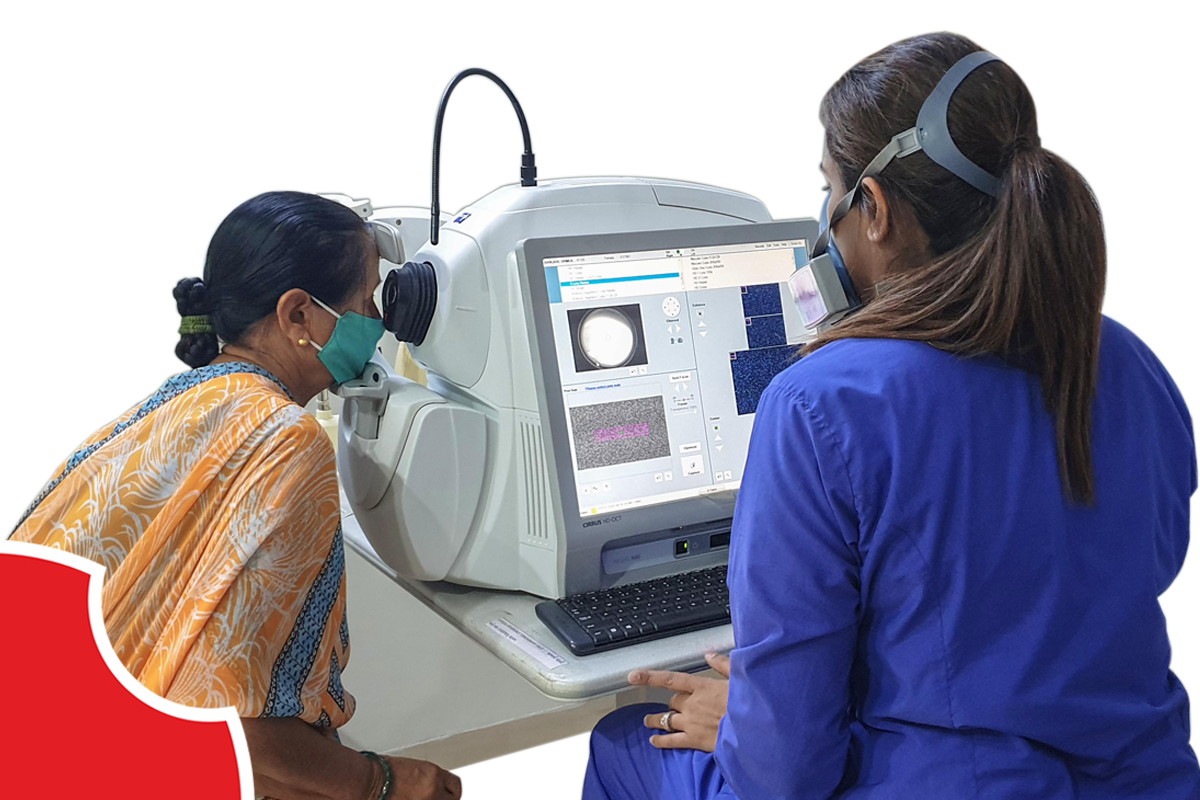
Book an Appointment
Open-angle Glaucoma
Open-angle Glaucoma is also known as wide-angle Glaucoma where the fluid does not flow the way it should in the eye.
Angle-closure Glaucoma
In angle-closure Glaucoma, the space between iris and cornea becomes narrow which does not allow the eye to drain. This situation causes pressure in the eye and creates a cloud inside the eye.
Secondary Glaucoma
When pressure is created in the eye which is linked to any other condition such as cataracts or diabetes, it is known as secondary Glaucoma.
Normal-tension Glaucoma
When blind spots start appearing in the vision and the optic nerve is damaged it is known as Normal-tension glaucoma.
Pigmentary Glaucoma
In pigmentary Glaucoma, small bits of pigment granules from iris build in the drainage channels which blocks the fluid exiting from the eye.
Factors that increase the risk of Glaucoma
Symptoms of Glaucoma
Causes of Glaucoma
Diagnosis
Glaucoma Treatment
The treatment of Glaucoma depends on its stage. There are three types of treatment available for a Glaucoma patient.
Medical Treatment
If you have open-angle Glaucoma, your doctor may prescribe eye drops which decrease eye pressure by improving how fluid drains from your eye or by decreasing the amount of fluid your eye makes.
Laser Treatment
The laser treatment is used when eye drops don’t show desired results. During the laser treatment, a high energy beam of light is aimed at the eye which stops fluid from building inside.
Surgical Treatment
Surgery is recommended when Medical and Surgical both treatments fail to show any improvement. During the surgery, a part of the eye-drainage tube is removed so the fluid can drain easily.
Glaucoma Prevention
Early detection of Glaucoma is important to prevent the loss of the vision, the following steps can help to detect Glaucoma on its initial stage.
Get your eyes checked regularly
Regular eye checkups can help to detect Glaucoma in its early stage. Early detection helps you to stop significant damages that might occur in future.
Exercise regularly
Moderate exercise may help to prevent Glaucoma by reducing the pressure in the eye.
Taking the prescribed eye drops regularly
Glaucoma eye drops can help to reduce the risk of high eye pressure. Use the eye drops prescribed by the doctor for an effective result.
Wear eye protection
Wear protective eye gear to protect your eyes from serious eye injuries which can lead to Glaucoma. Wear eye protection when you are involved in any kind of activity which can damage your eyes.
FAQ
Why is early diagnosis important?
Our eyes are very precious and fragile once our vision is lost, it cannot be regained. But lowering the eye pressure can help retain the vision you have. Most patients who follow their treatment plan and take a regular eye check-up regularly can eliminate the possibility of losing the vision.
What are the symptoms of Glaucoma?
Most people with open-angle glaucoma don’t have symptoms in the early stage. If symptoms do develop it usually starts showing up later in the course of the disease (approximately when 75% damage is done). The common symptoms of Glaucoma include watering, seeing halos around the light, frequent change in glasses, pain in the eye and headache, loss of vision.
How often should I go to an eye doctor?
Different people have different needs depending on various factors. A normal adult with no family history should visit an eye doctor once in a year while a normal adult with a family history should visit a doctor once every 6 months and if the person has been diagnosed with Glaucoma he/she must visit an eye doctor every 2-3 months.
Who is at risk of developing Glaucoma?
Anyone can get Glaucoma, but certain groups are at higher risk. These groups include the age of 40 years and above, Diabetics/Hypertensives patient, patient with the family history of Glaucoma, long term consumption of steroids and trauma.
What are the different diagnostic tests available at MM Chokshi eye hospital?
Following are the various types of diagnostic tests available at MM Chokshi eye hospital.
- Goldmann Applanation Tonometry
- OCT pachymetry and optic nerve analysis
- (Zeiss Cirrus 500 HD OCT)
- Ultrasound Pachymetry
- Gonioscopy
- Visual Field Testing (Humphrey Field Analyser)
What kind of Glaucoma treatment options are available for a Glaucoma patient?
The treatment depends on the stage of Glaucoma. There are basically three types of treating it.
- Medical treatment :
- If you have open-angle glaucoma, your doctor may prescribe eye drops which decrease eye pressure by improving how fluid drains from your eye or by decreasing the amount of fluid your eye makes.
- Laser treatment :
- The laser treatment is used when eye drops don’t show desired results. During the laser treatment, a high energy beam of light is aimed at the eye which stops fluid from building inside.
- Surgical treatment :
- Surgery is recommended when Medical and Surgical both treatments fail to show any improvement. During the surgery, a part of the eye-drainage tube is removed so the fluid can drain easily.
